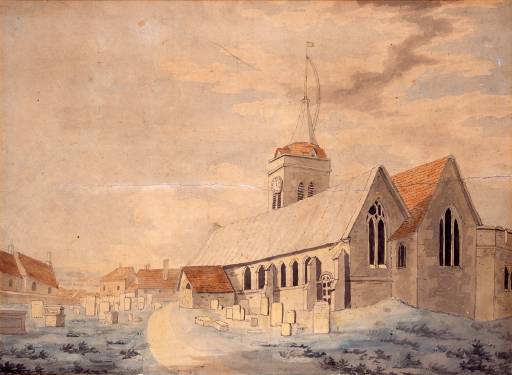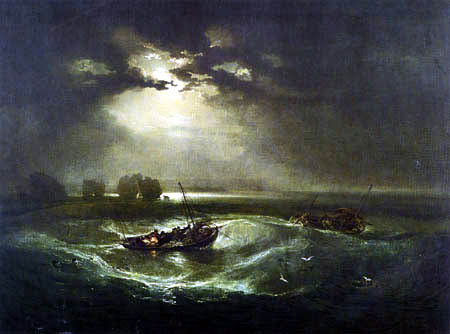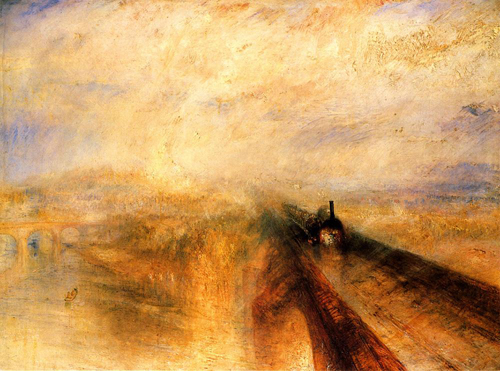Joseph Mallord William “J. M. W.” Turner was born in London, England on April 23, 1775 (so he claimed, however their is no actual proof of his birth) and is considered one of the finest British Romantic landscape painters of all time.
At 8 years old he was recognized as having giftedness and his father is said to have remarked, “My son is going to be a painter.” Little did he know that his son would become famous and successful at his art. At 15 years old, Turner received a rare honor–one of his paintings was exhibited at the Royal Academy. By the time he was 18 he had his own studio and before he was 20 print sellers were eagerly buying his drawings for reproduction. His entire life was consumed and devoted to his art. Unlike many artists of his era, he was successful throughout his career.

His family history was strange, his father was a barber and wig maker, and his mentally unstable mother Mary Marshall, came from a family of butchers. However as a young precocious boy he received little schooling, in fact, his father taught him how to read which was the extend of his education.
Turner spent little time in his parents home and much with various relatives. Though all of his early works were watercolor landscapes, he was painting in oils by 1796 and became a full member of the Royal Academy in 1802.
As Turner grew older, he became more eccentric. He had few close friends except for his father, who lived with him for 30 years and worked as his studio assistant. His father’s death in 1829 had a profound effect, and thereafter he was subject to bouts of depression. He never married but is believed to have been the father of two daughters. For months at a time he would disappear from the public eye and in 1850 he exhibited for the last time.
One day Turner disappeared from his house. His housekeeper, after a search of many months, found him hiding in a house in Chelsea. He had been ill for a long time. He died the following day–Dec. 19, 1851
He left a large fortune and some five hundred paintings and nineteen thousand watercolours to the nation.


![The Fighting Temeraire tugged to her last Berth to be broken up. When Turner came to paint this picture in 1839[4] he was at the height of his career, having exhibited at the Royal Academy, London, for 40 years. He was renowned for his highly atmospheric paintings in which he explored the subjects of the weather, the sea and the effects of light.](jpg/turner_j_m_w-the_fighting_temeraire_tugged_to_her_last_berth_to_be_broken1.jpg)
When Turner came to paint this picture in 1839[4] he was at the height of his career, having exhibited at the Royal Academy, London, for 40 years. He was renowned for his highly atmospheric paintings in which he explored the subjects of the weather, the sea and the effects of light.






